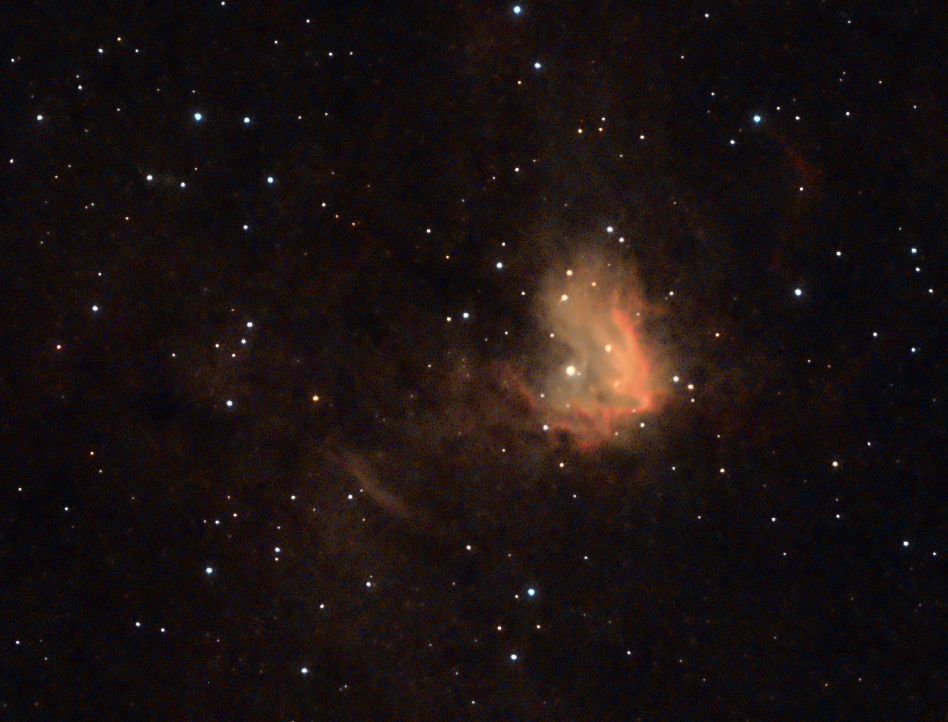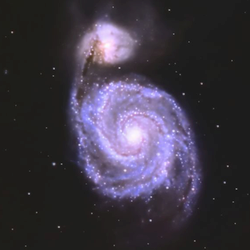Here’s an image of NGC 1491 (also designated Sharpless Sh2-206), a faint emission nebula that has an interesting shape. Some sources give it the name Fossil Footprint nebula.
Radiation pressure and stellar winds from the brightest star within the nebula has cleared a cavity in the gas clouds and is eroding them to form the surrounding prominent columns and pillars.

NGC 1491 is about 10,000 light-years away from us in the Perseus Arm of our sprial galaxy, the Milky Way and is about 100 light years across. It is a place where new stars are being born. Ultraviolet radiation from many massive hot new stars, especially the brightest one embedded within the “cave” in the center, ionizes the surrounding gas and causies it to glow reddish in visible light.

Since the images in this blog are relatively large and contain a lot of detail, if you are using a phone or a small tablet, you might want to consider returning sometime when you can use a computer with its larger screen.
